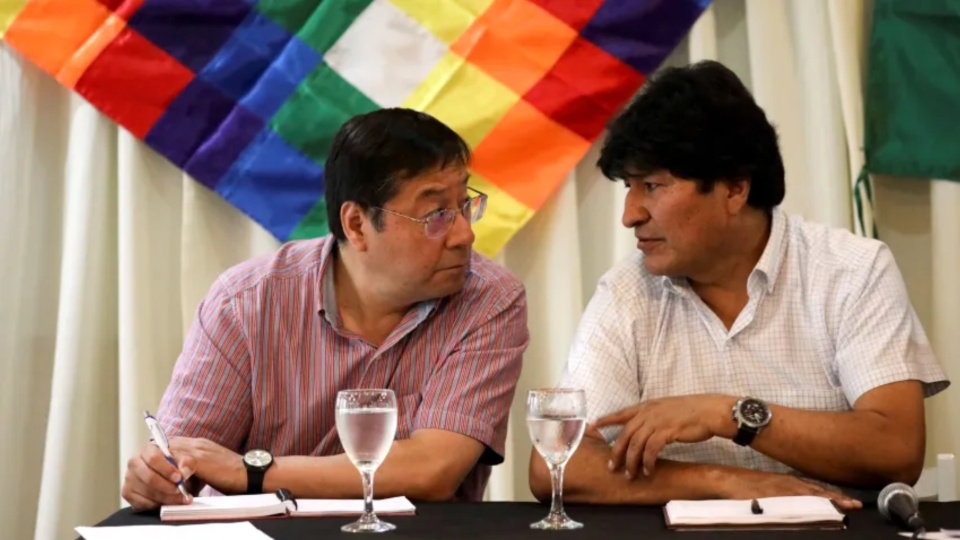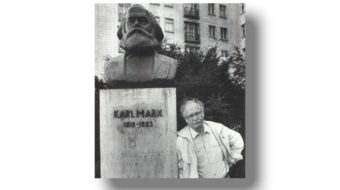
Beginning on Sept. 17, marchers proceeded north for 118 miles from Caracollo in Oruro department to La Paz, Bolivia’s capital city, arriving there on Sept. 24. Numbering from 5,000 to 15,000 – estimates vary – they were supporting former President Evo Morales. They called their march a “National March to Save Bolivia; for Life, Democracy, and Revolution.” They had signs saying “Evo President” and “Lucho Traitor” – in reference to current Bolivian president Luis Arce.
The Movement Toward Socialism (MAS) Party, the party of both presidents, has split into two warring factions. Arce served for 12 years under Morales as minister of the economy and finances. Morales served three presidential terms, from 2006 to 2019. He had led a federation of unionized coca growers, was Bolivia’s first indigenous president, and had been president of MAS since 1998.
Protesting shortages of food, fuel, and dollars and demanding that Morales be president, the marchers twice encountered resistance from hundreds of Arce loyalists. Security forces made arrests and dozens were wounded.
Socialist vs. socialist
Meetings and attempts at dialogue in La Paz were inconclusive. Morales was a no-show at one meeting. Speaking out elsewhere, he revived an old demand, insisting that Arce change his “corrupt, drug-trafficking, and racist ministers if he wants to continue governing.”
The Arce government sought to forestall new mobilizations that might “prejudice the normal development of the country.” A Morales spokesperson confirmed that highway blockades would resume on Sept. 30. His forces for two years had been carrying out blockades, strikes, and demonstrations—with 200 days of blockades in 2023.
On learning that the government would replace Justice Minister Iván Lima, the Morales side called off further blockades. Morales announced that “extreme poverty has returned and blockades will make it worse.” He also prioritized fire-fighting. The Morales side demanded that marchers who had been arrested be released.
Meeting in El Alto on Sept. 27, the “Unity Pact”—the name given to government supporters—heard from social movement groups. Concerned about shortages, along with Morales’s partisans, they demanded a “response and solution” from the government. Arce, who was present, charged that he was being forced to resign.
If he did so, the constitution would require that Senate President and Morales ally Andrónico Rodríguez be installed as temporary president. Then would come elections set for Aug. 17, 2025, and Morales would certainly be running.
From Cochabamba, Morales proposed a “great national meeting on Oct. 12 where we will be making other decisions.” He accused Arce of “selling out to the right wing, seeking to diminish the state, and following recommendations of the World Bank and International Monetary Fund.”
Before the split
In late 2019, Morales, having won the first round in presidential voting, was heading for a fourth term. Then came a U.S.-assisted coup; he was deposed and went into exile. The responsible parties were big landowners, oil and natural gas empresarios, and assorted racists in Santa Cruz and other eastern departments. Jeanine Áñez became provisional president, but she’s now in prison for her role in the coup.
From exile, Morales endorsed Luis Arce as the MAS candidate in presidential elections in 2020. He scored a 55% plurality. Morales returned to Bolivia shortly after, and that’s when signs of division began to emerge. Arce maintained popular support for a while, helped along by a successful response to an uprising in October 2022 carried out by reactionaries in the eastern departments.
At a MAS Party Congress in October 2023, delegates expelled Arce from the party and endorsed Morales as a presidential candidate for the upcoming elections. The Constitutional Court, however, ruled in December 2023 that Morales may not serve another presidential term.
In May 2024, another MAS Congress took place, with a different set of delegates. It backed Arce as the presidential candidate and named Grover García, government office-holder and former union leader, as president of the MAS Party to replace Morales.

Arce blames Evo Morales’s ambition for the split between the two men and their respective supporters in MAS: “[T]he personal and individual appetite of one person cannot drag the Bolivian people into again violating the Constitution.” The public seems to be focused on other issues, however, as Arce’s approval rating fell from 42% to 22% between January and September this year, according to one poll. “The main reason is the economic; basically, the increase in prices,” the report says.
Deterioration from an earlier state of affairs is remarkable, and the population is likely looking back on those earlier days of MAS rule under Morales fondly. From 2006 on, the MAS-led government carried out reforms that uplifted one of the most poverty-stricken populations in the Western Hemisphere.
According to one summary, Bolivia became a “Plurinational State” representing 36 indigenous cultures. Land was redistributed and the production of oil, natural gas, and electricity were nationalized. The minimum wage and per capita income each tripled; roads, schools, and hospitals were built. The elderly, mothers, and children received generous social support. Health care expanded and schools multiplied. The economy grew at twice the average rate of Latin American countries. International currency reserves amounted to US$15 billion in 2014.
Then natural gas production fell. International reserve funds were down to US$139 million in 2024. According to a BBC report, these were the sources of funds used by governments under Morales and Arce to pay for social programs, including fuel subsidies. Now income from natural gas exports, paid in dollars, is short, more so because fuel imports are paid for in dollars. Bolivia imports 56% of the gasoline and 86% of the diesel fuel it uses.
Dollars have been in short supply to pay for the needs of Bolivian society for several years now, and borrowing has shot up. Shortages persist, as does inflation. Foreign debt as a portion of GDP rose from 10% in 2008 to 30% in 2022.
Spoils system?
Economics is not the whole story, though. According to one account, “The main cleavage between Arce and Evo is the increasing inequality of state resources between the factions they represent.”
Informal employment in Bolivia is high. But “the government’s executive branch employs half a million people … Control over people and agencies represents power that is available to the Arce administration and not to the other side.”
According to commentator Luis Vega Gonzalez, racial identity is also a factor. On one side of “the abyss that separates them” are the Morales forces who are largely indigenous. On the other side are the “white mestizos represented by those who govern in conjunction with those whose power comes from perks.”
He adds that “[I]n three years, the Indians were displaced from power … the economy was handed over to the market … and the collective aspirations of the plurinational state had to be replaced by individual entrepreneurship and social climbing.”
Now, with Morales’ proposed Oct. 12 “great national meeting” pending, the members of the MAS Party face the huge task of trying to reunite their movement before U.S.-backed interests and the domestic right wing reorganize to strike again.
We hope you appreciated this article. At People’s World, we believe news and information should be free and accessible to all, but we need your help. Our journalism is free of corporate influence and paywalls because we are totally reader-supported. Only you, our readers and supporters, make this possible. If you enjoy reading People’s World and the stories we bring you, please support our work by donating or becoming a monthly sustainer today. Thank you!










